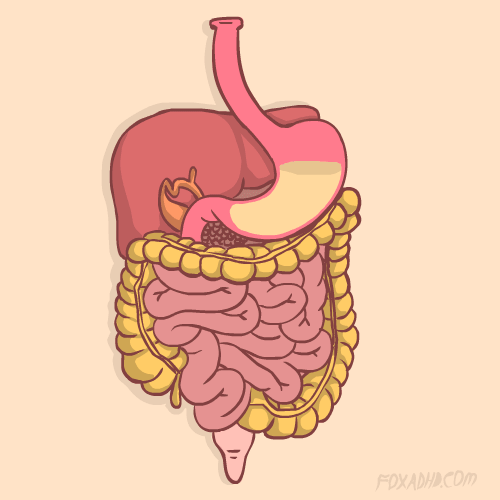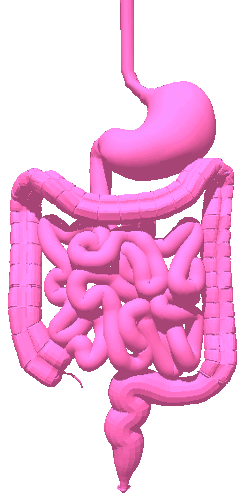
WELCOME TO YOUR :
DIGESTIVE SYSTEM


Welcome to the DIGESTIVE SYSTEM!
The Digestive Systems can be sorted into the:
SIX Major Parts
Mouth (Oral Cavity)
Esophagus
Stomach
Small Intestine
Large Intestine
Rectum (Anus).
Food, or whatever you decide to ingest, enters through your Mouth (Oral Cavity). This step is also known as INGESTION. To travel down into the stomach, it must go through the ESOPHAGUS. The Esophagus uses PERISTALSIS (rhythmic contraction) in order to push the food down into the stomach.
Pathway of Food w/ Description


Peristalsis
STOMACH:
after travelling down the esophagus, The food enters the Stomach. the stomach looks like a lopsided football, FOod is stored and "decomposed" here. Using GASTRIC JUICE (MIX OF PEPSIN and HYdroChloric acid). STOMACH IS PROTECTED FROM THIS by using MUCUS
FUN FACt:
ULcers is when heliobacter pylori ( a gram negative bacteria) almost eats your stomach and lets acid damage it.
esophagus:
THe small intestine is the longest (Literally) part in the digestive system. After the stomach, the food moves along to the small intestine., where most of the nutrients are absorbed. THe SMALL INTESTINE IS divided into 3 sections.
SMALL INTESTINE
DUODENUM
where acid is released to break down
JEJUNUM
absorbtion by villi/microvilli
ILEUM
absorbtion by villi/microvilli
MICROVILLI and VILLI
villi, and microvilli are tiny hairs that line the small intestine that give the nutrients directly to the blood stream. the hairs are lined with capillaries.
FUN FACT:
the large intestine contains a section called the cecum that helps break down CELLUOSE
LARGE INTESTINE
large intestine is where the cycle continues after the small intestine.. the LARGE Intestine is responsbile for asobring water, and storing extra resources.
OTHER DIGESTIVE ORGANS:
PANCREAS:
produces insulin, has alkaline to neutralize acid

liver:
produces bile and helps digestion
gallbladder
stores and releases bile
FINAL PRODUCT STORED AS FECES. EXITS THROUGH THE RECTUM (ANUS)